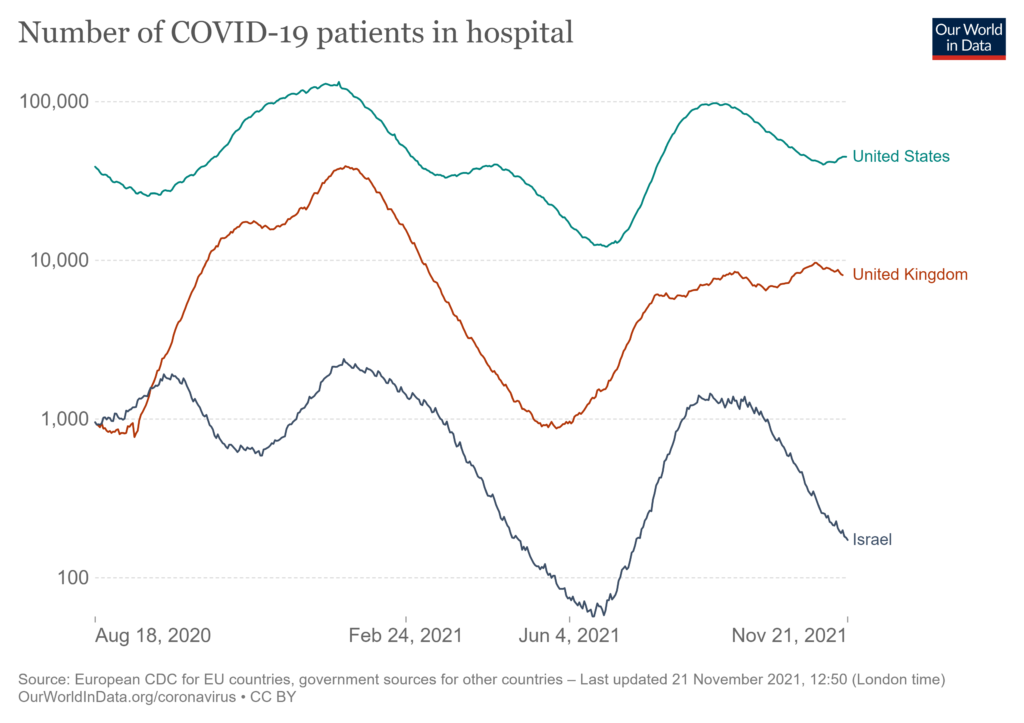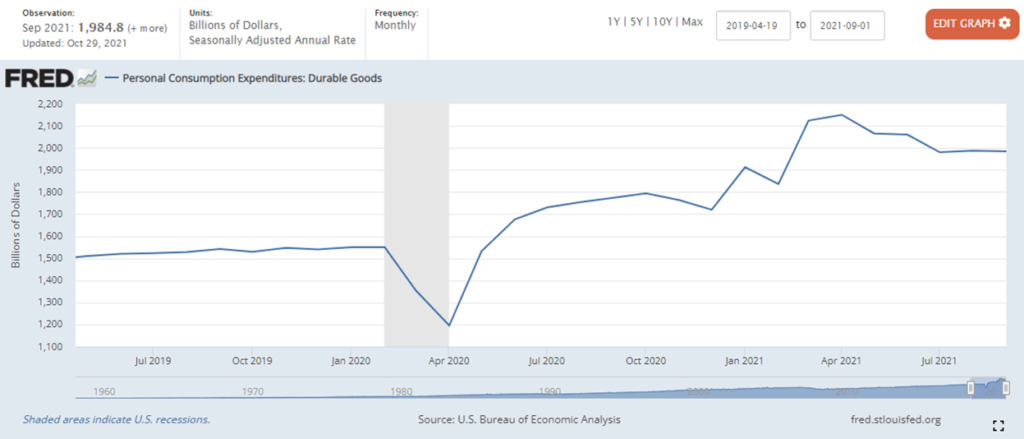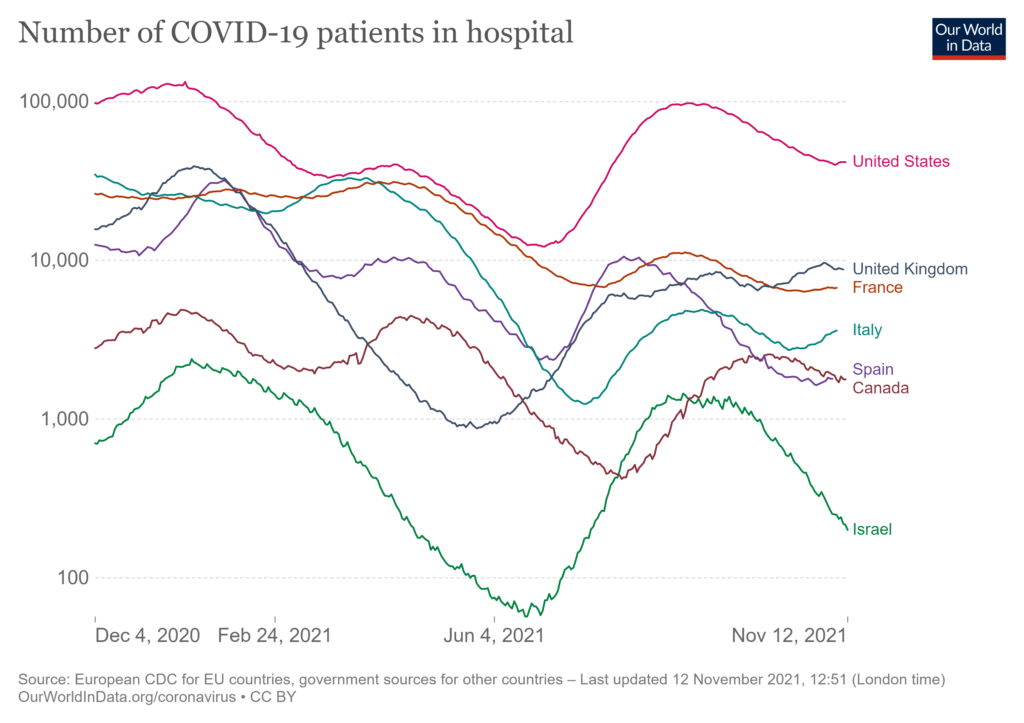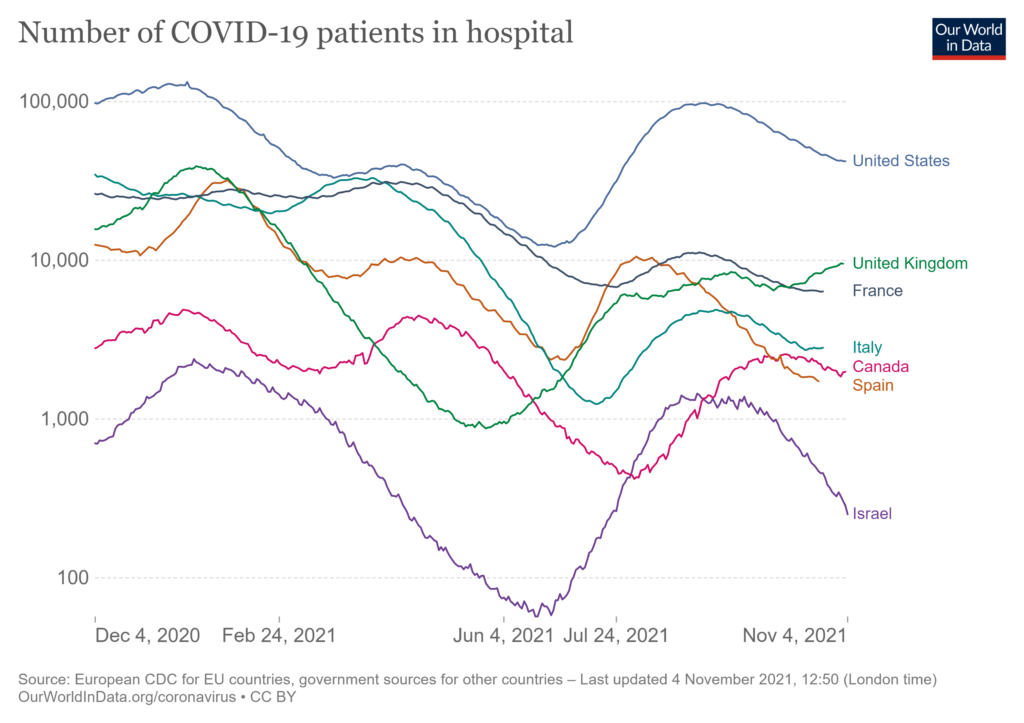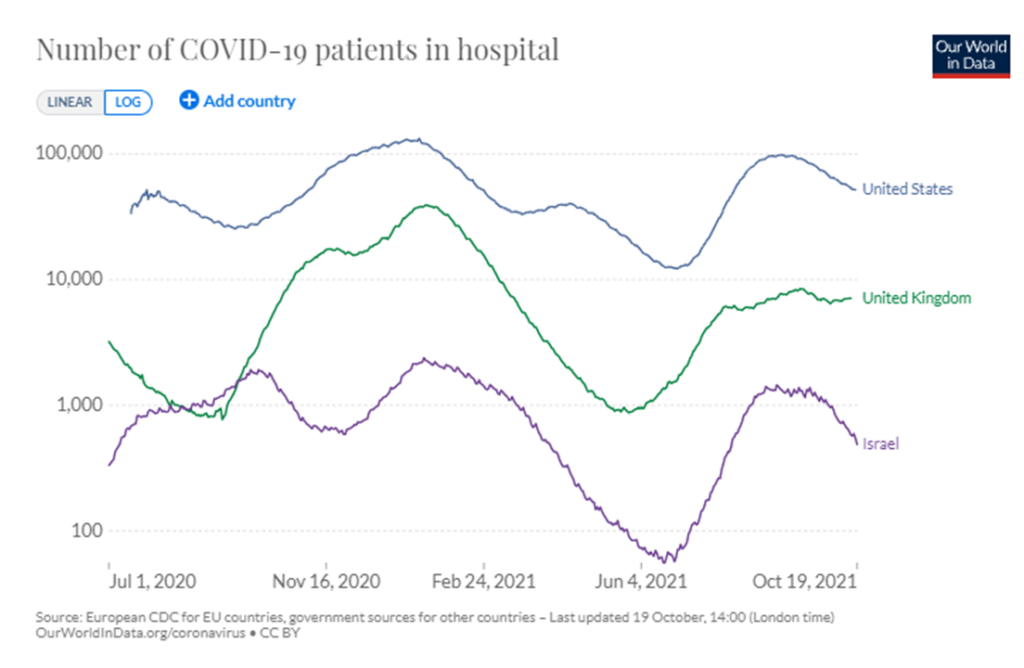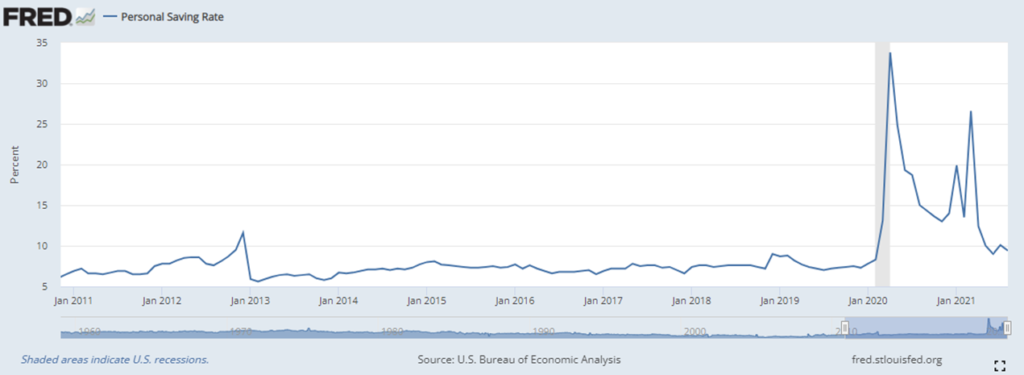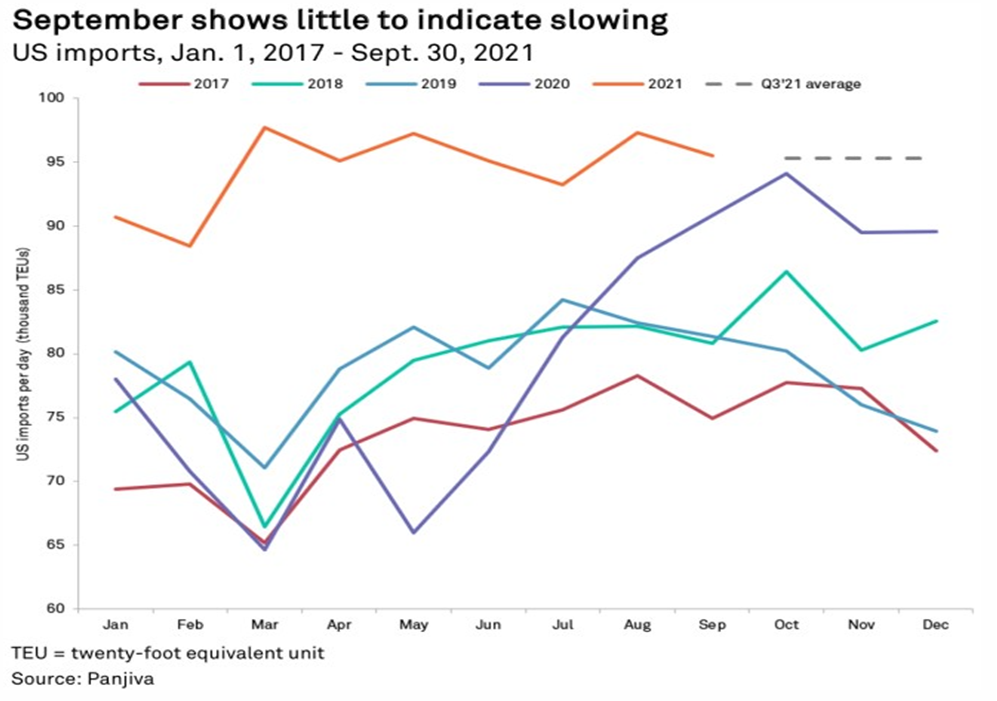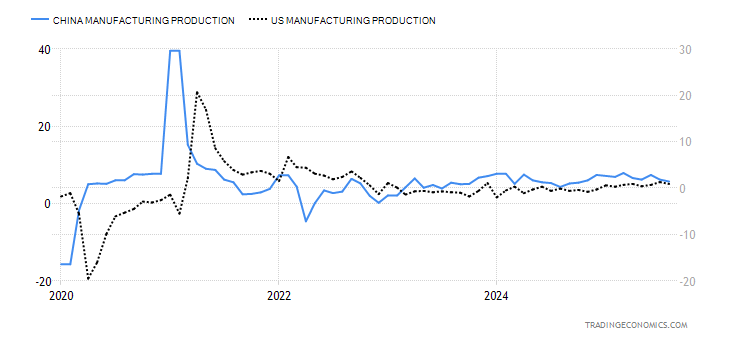At the start of Thanksgiving week 2020 about 80,000 Americans were hospitalized with covid. The only persons vaccinated were participants in laboratory trials. This week about 45,000 Americans are hospitalized with covid and about sixty percent of US residents are “fully” vaccinated. According to Reuters, the US vaccine consumption rate (doses administered/population) is about 69 percent.
In late November last year the United States was about eight weeks into a so-called “third wave” that would finally peak in mid-January 2021 with more than 130,000 hospitalized. This year we have spent the last few weeks on an off-peak plateau from a late-summer wave associated with the Delta variant. Hospitalizations have surged in some locations (e.g., Michigan and Minnesota), but so-far not nationwide. We do not seem to have significant competitor for Delta emerging (yet).
Another autumn-winter surge in US hospitalizations starting from the current high plateau would seriously disrupt the US healthcare system. The long-term plateauing of UK hospitalizations indicates this is not inevitable. The long-term decline in Israel’s hospitalizations tells us even more about how to avoid another wave crashing into ICUs.
The United Kingdom has a vaccine consumption rate about 83 percent (14 percentage points above the US). Israel is better yet at over 85 percent. Israel was also the early mover on tracking declining immunity six months after vaccination and pushing booster shots for the whole population. Non-Pharmaceutical Interventions are so variable, I’m not confident of meaningful comparisons. But according to the Institute for Health Metrics and Evaluation residents of Israel are wearing masks much more regularly than Brits or Americans (more).
The quickly worsening situation in Germany (more) is worth careful consideration. The German vaccine consumption rate is about the same as that of the US. Mask use is about 40 percent in both the US and Germany. Both nations feature differentiated regional vaccination patterns, leading to higher risks of community transmission where inoculation is well-below the national average. With a population about one-quarter that of the US, Germany currently has more than half as many hospitalized covid patients and some project German hospitalizations will equal current US hospitalizations before Christmas.
Whither thou goest…?
